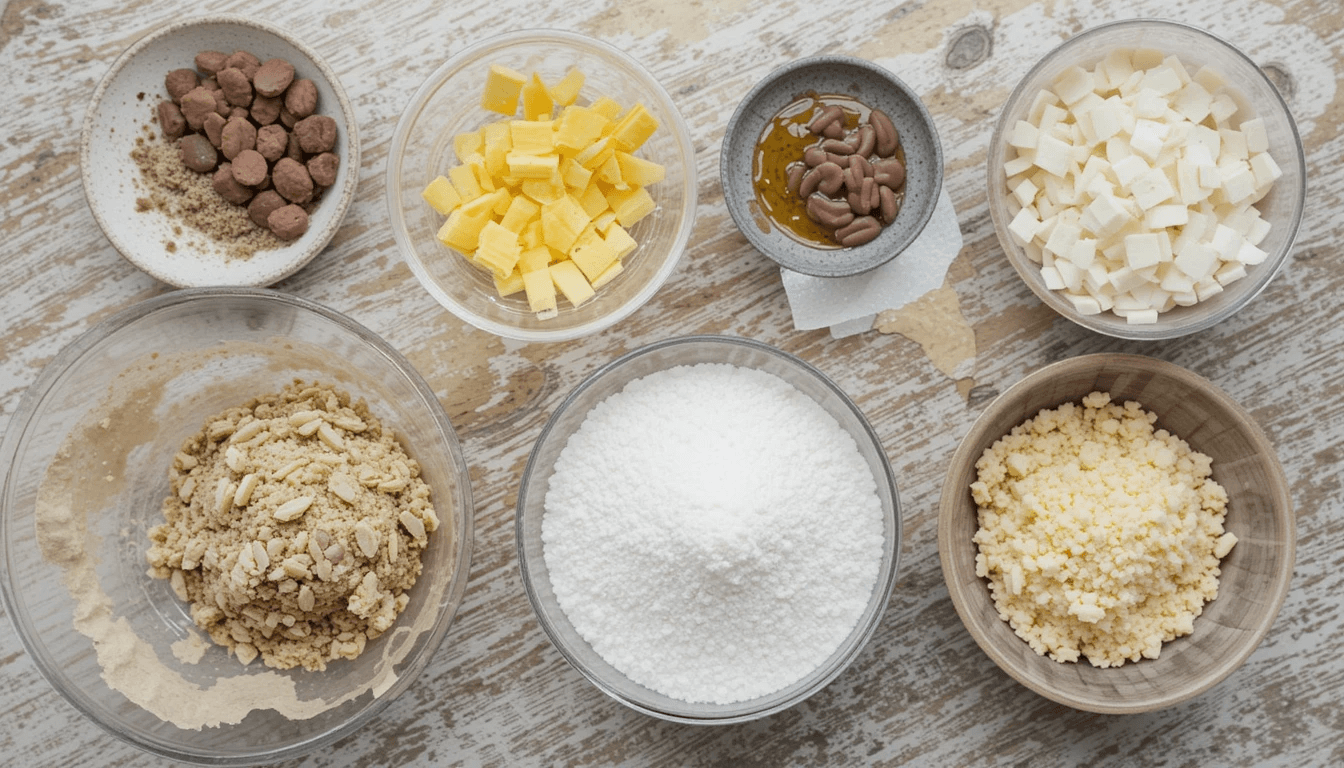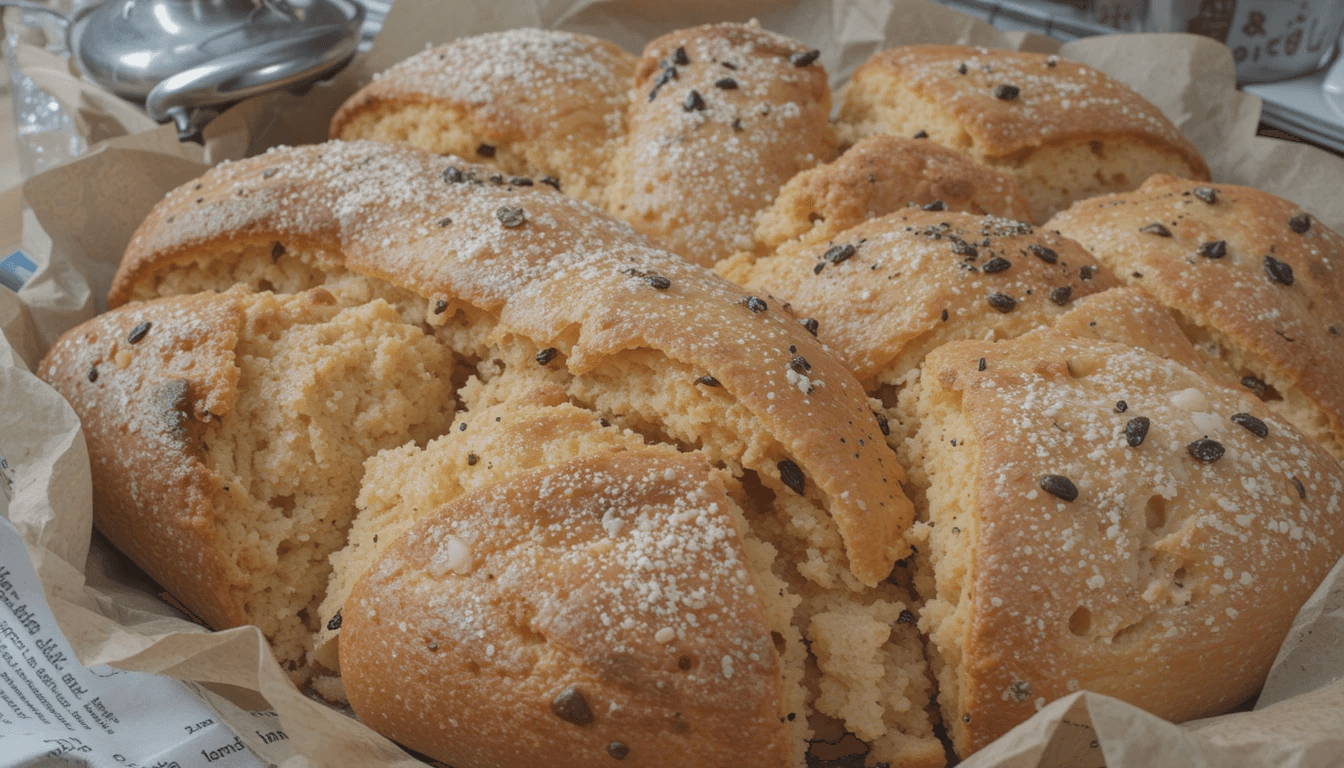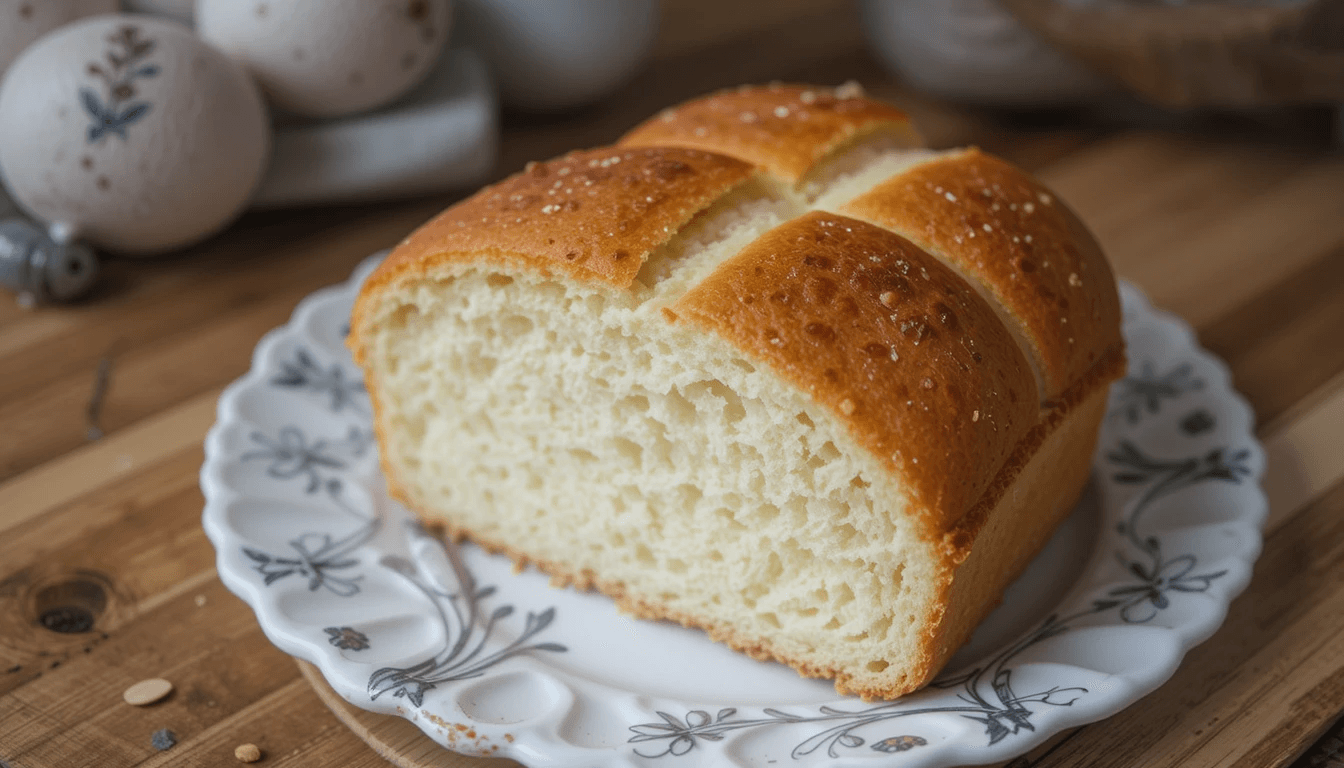Matjesbrötchen is a classic German fish sandwich featuring mildly salted herring fillets layered with tangy toppings in a fresh bread roll. This matjesbrötchen recipe involves gently marinating the fish, preparing a creamy or crunchy garnish, and assembling it all for a delightfully savory bite. Get ready to discover the simple steps and tasty variations that make this sandwich a beloved treat.
Introduction
Imagine strolling through a bustling German harbor town, the scents of the sea mingling with the aroma of fresh bread. As you pass by quaint food stands, you spot an irresistible sight: plump, silvery herring fillets tucked into a fluffy roll, often with onions or pickles adding a splash of color. That, in a nutshell, is the essence of a matjesbrötchen recipe—a straightforward, yet deeply satisfying dish that unites land and sea in one bite. Whether you’re new to German cuisine or a seasoned traveler craving a taste of nostalgia, this sandwich has a way of bringing a smile to your face.
(Disclaimer: This article is for informational purposes only and does not replace professional veterinary advice or medical guidance. If you have specific dietary restrictions or health concerns, consult a qualified professional.)
The Story Behind Matjes and the Popularity of Matjesbrötchen
Before diving into the matjesbrötchen recipe, it helps to understand what makes matjes so special. “Matjes” refers to young, mild-salted herring that is high in healthy fats yet gentle on the palate. Unlike heavily salted or smoked fish, matjes herring retains a delicate texture and a slightly sweet flavor, thanks to its unique preparation process that involves gentle salt-curing and often a touch of sugar.
Matjes herring has been a culinary staple in Northern Europe for centuries. According to historical sources, the Dutch played a significant role in popularizing this young herring by perfecting the “gibbing” process in the 14th century. Germany soon adopted its own methods to preserve and serve herring, leading to the beloved tradition of matjesbrötchen recipe you’ll find in coastal towns and beyond. It’s no surprise that street vendors across Germany often display rows of gleaming matjes fillets, inviting passersby to enjoy a quick meal bursting with oceanic freshness.
Beyond just being delicious, matjes are also a nutritional powerhouse. They’re packed with omega-3 fatty acids, known to support heart health, and are a good source of vitamins D and B12. This makes a matjesbrötchen recipe not only a pleasure for your taste buds but also a way to sneak in some essential nutrients. If you’d like to learn more about the general nutritional profile of herring, you can check reputable sources such as the USDA FoodData Central Database.

Key Ingredients for a Classic Matjesbrötchen Recipe
When it comes to a matjesbrötchen recipe, the ingredients are refreshingly simple. The magic often lies in the quality and freshness of each component. Below are the essentials you’ll want to gather before you start:
- Matjes Herring Fillets
- Look for properly salted matjes fillets, typically sold in jars or vacuum packs. You want fillets that appear firm and moist, with a mild aroma. Quality is crucial, as the entire matjesbrötchen recipe hinges on this star ingredient.
- Bread Rolls (Brötchen)
- Traditional German brötchen work best for the perfect matjesbrötchen recipe, but you can also opt for crusty rolls, baguettes, or even pretzel buns. The bread should be sturdy enough to hold the fillings without falling apart, yet still have a soft, tender crumb.
- Onions
- Raw onions are the classic accompaniment. Thinly sliced rings of red or white onions bring a tangy crunch to every bite of your matjesbrötchen recipe.
- Pickles
- Dill pickles or gherkins help cut through the richness of the fish. They also lend an acidic note that pairs beautifully with salted herring.
- Lettuce, Tomato, or Other Greens (Optional)
- While not always part of a traditional matjesbrötchen recipe, a leaf of crisp lettuce, a slice of tomato, or a small handful of sprouts can add extra freshness and color.
- Sauces or Spreads (Optional)
- Some versions include a light smear of remoulade, tartar sauce, or even crème fraîche. Others stick to the basics: fish, onions, pickles, and bread.
- Spices or Seasonings
- While classic versions keep it simple with just salt and pepper, you can experiment with pepper, fresh dill, or a sprinkle of chives.
Remember, the beauty of a matjesbrötchen recipe lies in its adaptability. If you prefer extra crunch, load up on onions or pickled vegetables. If you like something creamy, add a dollop of sauce. There’s plenty of room to make this dish your own.

Step-by-Step: How to Prepare Your Matjesbrötchen Recipe
Now that your ingredients are ready, let’s walk through the preparation process. While this matjesbrötchen recipe might look straightforward, small details like patting the herring dry or choosing the right bread can make a big difference.
1. Gather and Prep Your Ingredients
- Take your matjes herring fillets out of the package or jar. Check them for any small bones or excess brine.
- Slice your onions thinly. If you find onions too pungent, you can soak the slices in cold water for 5–10 minutes to mellow their flavor.
- Halve your pickles lengthwise or slice them into small rounds.
- If using lettuce or tomato, rinse and dry them well.
- Have your bread rolls at room temperature. You don’t want them too hot, as the heat might overpower the delicate flavors of this matjesbrötchen recipe.
2. (Optional) Light Marinade for Extra Flavor
While matjes herring is already salted and slightly pickled, you can give it an extra boost by creating a quick marinade:
- In a shallow bowl, mix 1 tablespoon of white wine vinegar, 1 teaspoon of sugar, a dash of black pepper, and a few chopped dill sprigs.
- Gently coat the matjes fillets in this mixture.
- Let them rest for about 10 minutes. This optional step brings out a bit more nuance in your matjesbrötchen recipe.
3. Prepare a Creamy Sauce or Spread (Optional)
If you like a creamier texture, whip up a simple sauce:
- Combine equal parts mayonnaise and Greek yogurt.
- Add a squeeze of lemon juice, a pinch of salt, pepper, and a teaspoon of chopped dill.
- Give it a taste and adjust the seasonings. This sauce can elevate your matjesbrötchen recipe with a tangy, velvety layer.
4. Assemble the Sandwich
- Slice the Bread Roll: Cut the bread roll horizontally, but don’t slice all the way through if you want it hinged.
- Spread (Optional): If you’re using a sauce, lightly spread it on the bottom half.
- Lay Down the Fish: Place one or two matjes fillets on the roll, depending on the size of the fillets and bread.
- Add the Vegetables: Arrange onion rings and pickles on top of the fish. If including lettuce or tomato, layer them in at this point.
- Season (Optional): Finish with a pinch of black pepper, a sprinkle of fresh dill, or any other favorite herbs. You typically don’t need extra salt because the matjes herring is already well-seasoned, making the matjesbrötchen recipe a perfect blend of flavors.
5. Enjoy Immediately
Matjes herring is best enjoyed fresh and cold. Some people like to warm their bread slightly, but be cautious about overheating. Serve your matjesbrötchen recipe immediately to preserve the crispness of the onions and the distinctive firmness of the fish. A side of fries or a light salad can complete the meal, but many purists prefer to savor the sandwich on its own.

Variations and Creative Twists on the Classic Matjesbrötchen Recipe
Part of the fun of cooking is experimenting. The base matjesbrötchen recipe sets the stage for countless variations. Below are a few inspired ideas to add some flair to your next fish sandwich adventure:
- Scandinavian-Inspired Twist
- Swap the mayonnaise for a layer of herbed cream cheese.
- Top the herring with thin slices of cucumber and a sprinkle of fresh dill.
- This approach emphasizes the delicate, cool aspects of a matjesbrötchen recipe while paying homage to Nordic flavors.
- Spicy Kick
- Mix a small amount of sriracha or chili paste into your sauce.
- Add sliced jalapeños or chili flakes for an extra zing.
- This version is perfect if you want your matjesbrötchen recipe to pack some heat.
- Sweet and Sour Fusion
- Incorporate a slaw made with shredded cabbage, carrot, and apple cider vinegar.
- The fresh crunch and mild sweetness complement the salty fish in your matjesbrötchen recipe.
- A dab of honey or maple syrup in the dressing can balance the tanginess.
- Mediterranean Flair
- Drizzle the fish with a touch of olive oil, lemon juice, and oregano.
- Replace standard pickles with olives and roasted red peppers.
- Although non-traditional, these Mediterranean flavors bring a sunny dimension to your matjesbrötchen recipe.
- Deconstructed Salad Version
- If you’re cutting back on carbs, turn the elements of a matjesbrötchen recipe into a hearty salad.
- Top mixed greens with chopped matjes, onions, pickles, and a light vinaigrette.
- Serve with rye crisps or small bread slices on the side for texture.
Experimentation is key. The mild nature of matjes herring pairs remarkably well with a wide range of tastes. Don’t be afraid to push culinary boundaries as you discover new ways to enjoy your matjesbrötchen recipe.
Nutritional Benefits and Considerations
When you dive into a matjesbrötchen recipe, you’re not just indulging in taste—you’re also fueling your body with beneficial nutrients. Below are some highlights and considerations to keep in mind:
- Omega-3 Fatty Acids
- Herring is high in omega-3 fatty acids, which have been linked to heart health, reduced inflammation, and possibly cognitive benefits (Harvard T.H. Chan School of Public Health, n.d.). These fats are considered essential, meaning our bodies need them from food sources.
- Protein-Rich
- Protein is essential for muscle repair, hormonal balance, and overall health. Matjes herring offers a quality protein source, especially valuable in a meal as quick and easy as a matjesbrötchen recipe.
- Vitamins and Minerals
- Expect to find vitamins D and B12 in matjes herring. These support bone health and energy production. Some salted or pickled herring can also contain a fair amount of sodium. If you’re watching your sodium intake, consider rinsing the fillets lightly before assembling your matjesbrötchen recipe.
- Balance Your Meal
- While the sandwich itself provides protein and healthy fats, it’s a good idea to pair your matjesbrötchen recipe with vegetables, such as a fresh salad, or fruit to round out the meal’s nutritional profile.
- Potential Allergies or Sensitivities
- Fish and seafood allergies are common, so always confirm that those enjoying the sandwich do not have fish-related intolerances. Also, watch out for potential additives in certain commercial matjes products, especially if you have food sensitivities.
(Note: If you have a medical condition or specific dietary needs, consult a healthcare professional for guidance. This article is for informational purposes only and does not replace professional advice.)
Tips for Selecting and Storing Matjes
A high-quality matjesbrötchen recipe begins with top-notch matjes fillets. Below are a few guidelines on picking and storing your fish:
- Read Labels
- Look for labels that specify “matjes” or “young salted herring.” The packaging should also indicate that the fish has been cured properly and is ready to eat.
- Examine Color and Texture
- The fillets should have a soft, silvery hue without any brownish discolorations. Texture-wise, matjes should feel firm but not rubbery.
- Check Expiration Dates
- If buying pre-packaged matjes, ensure that you have enough time to consume them before the “best by” date. Proper storage is critical for a safe and delicious matjesbrötchen recipe.
- Refrigerate Promptly
- Once purchased, place the matjes in the coldest part of your fridge, ideally between 32–38°F (0–3°C). If you’ve opened the jar or pack, place any leftovers in an airtight container and use them within a few days.
- Avoid Cross-Contamination
- Store matjes away from other raw meats, poultry, or produce. This helps maintain the purity of flavor and reduces the risk of foodborne illnesses, ensuring your matjesbrötchen recipe remains a safe, delicious treat.
Serving Suggestions and Pairings
A matjesbrötchen recipe is often enjoyed as a quick lunch or snack in Germany. However, it can also serve as part of a more elaborate meal. Here are some pairing ideas to elevate your culinary experience:
- Side Dishes
- French Fries: Crisp fries add a hearty balance to the lighter texture of the fish.
- Potato Salad: A German-style potato salad, slightly tangy from vinegar and onions, works wonders with your matjesbrötchen recipe.
- Coleslaw: Creamy coleslaw complements the savory flavors of the sandwich, especially if you like more crunch.
- Beverage Pairings
- Beer: A crisp pilsner or a light wheat beer is a classic choice alongside your matjesbrötchen recipe.
- White Wine: If you prefer wine, opt for a dry Riesling or Sauvignon Blanc, which cuts nicely through the richness of the herring.
- Non-Alcoholic: Sparkling water with lemon or a simple lemonade can refresh your palate between bites.
- Holiday or Festive Meal
- In some regions of Germany, salted herring is tied to holiday traditions like New Year’s Eve. Incorporate your matjesbrötchen recipe into a festive buffet, offering it alongside other finger foods and small dishes for variety.
- Make It Brunch-Worthy
- Serve your matjesbrötchen recipe with scrambled eggs, fresh fruit, and a strong cup of coffee or tea for a hearty brunch spread.
No matter how you serve it, the marriage of soft bread, salted matjes, and crunchy onions or pickles ensures a satisfying, well-rounded bite every time.
Staying True to Y.M.Y.L and E.E.A.T in Seafood Consumption
With recipes involving raw or lightly cured fish, food safety is paramount. Here are key practices to maintain the highest standards of safety and trustworthiness when making a matjesbrötchen recipe:
- Source Your Fish Responsibly
- Choose suppliers who follow proper handling and storage procedures. This helps reduce the risk of contaminants and aligns with the environmental ethics of sustainable fishing.
- Observe Proper Hygiene
- Always wash your hands before and after handling raw fish. Use separate cutting boards and knives to avoid cross-contamination. This ensures your matjesbrötchen recipe remains safe.
- Check for Freshness
- Matjes herring should smell like the ocean—salty and fresh, but never overwhelmingly fishy. If in doubt, it’s better to discard suspicious fish than to risk consuming unsafe products.
- Informational Purposes Only
- This guide is provided for general knowledge about the matjesbrötchen recipe. Always consult trusted medical or dietary professionals for individualized advice.
FAQs
1) What is the recipe for Mangria?
Mangria is a strong punch combining red wine, orange juice, and high-proof liquor. Unlike a matjesbrötchen recipe, it’s a sweet, boozy drink instead of a savory fish dish. Enjoy in moderation with ice or fruit chunks for a refreshing twist.
2) What is the recipe of Eromba?
Eromba is a traditional Manipuri dish featuring boiled vegetables and fermented fish. While it contrasts a matjesbrötchen recipe by using hot chilies, both highlight tasty fish elements. Ingredients typically include potatoes, smoked fish, and local spices for a hearty meal.
3) How to make morok metpa?
Morok metpa is a spicy Manipuri chutney made with chilies, herbs, and fermented fish. Much like our matjesbrötchen recipe, it celebrates bold flavors but leans on heat and pungency. A quick mash or grind of the ingredients yields a fiery side dish.
4) What are the nutrients in Eromba?
Eromba typically contains protein from fermented fish plus vitamins from boiled veggies. Although distinct from a matjesbrötchen recipe, both deliver beneficial nutrients through fish. Its vitamin and mineral content varies by the vegetables you include.
Conclusion
A matjesbrötchen recipe is more than just a sandwich—it’s a taste of German coastal heritage, a quick meal that’s surprisingly nutritious, and a culinary blank canvas waiting for your personal twist. From selecting high-quality matjes to layering on onions, pickles, and perhaps a creamy sauce, the steps are easy enough for any home cook to follow. Whether you keep it classic or go creative with spicy or Mediterranean flavors, the result is a satisfying bite that resonates with centuries of European fish preservation traditions.
Key Takeaways
- matjesbrötchen recipe celebrates salted young herring fillets layered in a fresh bread roll.
- Traditional toppings include onions and pickles; optional sauces or greens can add variety.
- Quality fish, proper storage, and mindful handling ensure safety and flavor.
- Simple steps make it a versatile, nutrient-rich meal.

